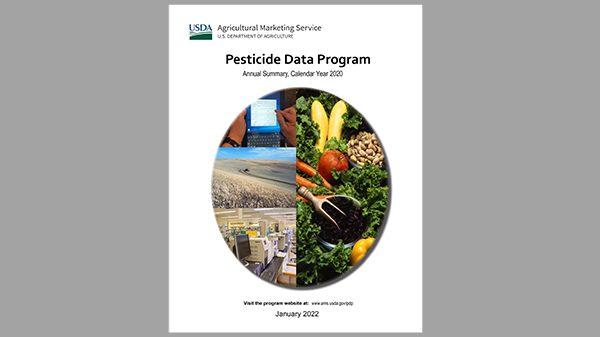From the Alliance for Food and Farming
The U.S. Department of Agriculture (USDA) will host a webinar on March 15 at 10:00 a.m. PT, 1:00 p.m. ET to provide an overview of the current Pesticide Data Program (PDP) with highlights of the 2020 PDP results, as well as a retrospective of 30 years of PDP history and examine trends across the 30 years of data.
According to the USDA: “The PDP is a national pesticide residue monitoring program for agricultural commodities in the U.S. food supply. The 2020 annual PDP data are the 30th annual data set from PDP. With almost 311,000 samples from 126 different commodities and more than 42 million individual pesticide residue-commodity paired data points, the PDP database is one of the largest sources of residue data available. These high-quality, nationally representative pesticide residue data contribute to the information available to help ensure consumer confidence in the foods they provide to their families.“
In 2020, the PDP results showed that more than 99% of the foods tested had residues well below Environmental Protection Agency (EPA) safety standards with a third having no detectable residues at all.
It should be noted that certain groups often misrepresent the findings of this USDA report and manipulate the data to somehow turn these very positive results into something negative. The authors of the so-called “dirty dozen” list have used this data-manipulation tactic for decades.
The Alliance for Food and Farming consistently recommends that media and consumers review the actual USDA PDP report before covering or referencing the “dirty dozen” list.
This webinar with Brenda Foos, Director of the Monitoring Programs Division in USDA’s Agricultural Marketing Service, Science and Technology Program, provides an important overview of this food safety program and provides an opportunity to learn more about what the USDA PDP report really says.
Visit safefruitsandveggies.com to learn more about the safety of all produce.



